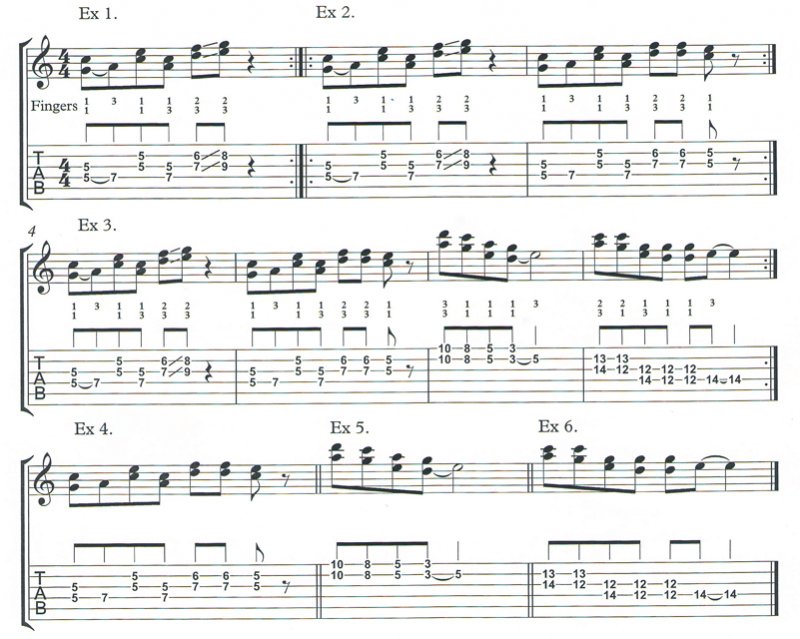Guitar Cool: Building Rhythm Riffs
Guitar Cool: Building Rhythm Riffs
Before I get into this lesson I would like to congratulate Richard and the team at NZM, along with all the past contributors, for all their efforts to make this magazine a number one NZ musical resource. I remember when NZM first came out and my good friend Bruce Morley was writing for it, and thinking to myself – ‘Wow, I could only ever dream of doing something like that’, not knowing that 25 years later I would have contributed Guitar Cool for almost half that time. Moral of the story is to stick to your guns and never give up as one day those dreams may well come to fruition.
As you most probably know, playing quality rhythm guitar is a lost art these days. Not many guitar players are very good at it, but it is what we have to do around 95% of the time when playing in a band or jamming with friends. The more time you spend learning all about rhythm guitar styles, the more rewards you will get out of your music.
When building rhythm riffs you will be calling upon all your knowledge of chords, inversions, scale patterns and intervals. Rhythm riffs are not so much about strumming chords, but coming up with triadic, double stop, or single note ideas to compliment the song you are playing.
Example 1 shows a one bar rhythm riff with two notes from a C major triad at the fifth fret. In this example the first finger will partially bar the fifth fret notes while the third finger plays the seventh fret notes. Then there is a little slide up with the second and third fingers to the C shape triad at the eighth fret. If you know bar chords you should be able to see that these notes are from those bar chords you already know.
If you take Example 1 now and expand the idea by another bar you get Example 2. This two bar rhythm riff is hanging around the same idea as in the first example. The simplicity of the ideas is what is important here as too many players tend to over complicate things. So remember when inventing rhythm riffs – simple is best.
 Example 3 is now expanded to a four bar rhythm riff. It takes the two bars from Example 2 and adds another two bars with a slightly different idea to give it two evenly balanced phrases. The third bar involves intervals of fourths that are related to the C chord with a hammer onto the third of the chord at the end. The fourth bar is a combination of third and fourth intervals. Watch the fingerings in this example as they might be a bit tricky to begin.
Example 3 is now expanded to a four bar rhythm riff. It takes the two bars from Example 2 and adds another two bars with a slightly different idea to give it two evenly balanced phrases. The third bar involves intervals of fourths that are related to the C chord with a hammer onto the third of the chord at the end. The fourth bar is a combination of third and fourth intervals. Watch the fingerings in this example as they might be a bit tricky to begin.
Once you have these ideas going well it is time to expand your repertoire of rhythm riffs even further. But you don’t need to go far to learn a lot more riffs as they are already under your fingers. What you do now is expand on what you already know.
Example 4 is the second bar idea from Example 2. What you need to do is to take that idea and add another one bar idea to it to make it a two bar riff. Then once you have done that, see if you can expand it into a four bar rhythm riff with two balanced ideas like you played above in Example 3. Now do the same with Examples 5 and 6.
Once you get the creative juices flowing you will find you will come up with thousands of cool ideas for rhythm riffs. And guess what? Once you can come up with riffs like this on the spot, your rhythm playing and songwriting will go into the stratosphere. To hear an example of this lesson go to http://www.guitar.co.nz/building-rhythm-riffs/.
Kevin Downing is a professional guitarist, teacher, and author based in Palmerston North. His contact details, along with many freebies, are on his website at www.guitar.co.nz
